-
 bitcoin
bitcoin $112715.707551 USD
-1.71% -
 ethereum
ethereum $4101.475385 USD
-3.01% -
 tether
tether $1.000644 USD
-0.02% -
 bnb
bnb $1207.619465 USD
-6.77% -
 xrp
xrp $2.501451 USD
-3.98% -
 solana
solana $202.947124 USD
-3.32% -
 usd-coin
usd-coin $1.000295 USD
0.04% -
 dogecoin
dogecoin $0.203884 USD
-4.47% -
 tron
tron $0.317154 USD
-1.72% -
 cardano
cardano $0.695009 USD
-4.43% -
 hyperliquid
hyperliquid $38.853961 USD
-8.23% -
 chainlink
chainlink $18.988674 USD
-4.64% -
 ethena-usde
ethena-usde $1.000233 USD
-0.03% -
 stellar
stellar $0.337050 USD
-3.63% -
 bitcoin-cash
bitcoin-cash $536.861728 USD
-1.28%
How do you use the KDJ indicator to find entry and exit points?
The KDJ indicator helps crypto traders spot entry and exit points using %K, %D, and J line crossovers, with buy signals below 20 and sell signals above 80.
Aug 11, 2025 at 01:50 pm
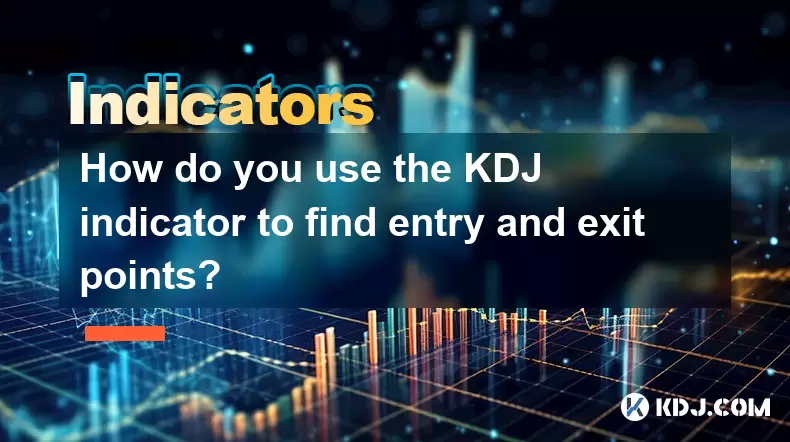
Understanding the KDJ Indicator in Cryptocurrency Trading
The KDJ indicator is a momentum oscillator widely used in cryptocurrency trading to identify potential entry and exit points based on price momentum and overbought or oversold conditions. It is derived from the Stochastic Oscillator but includes an additional component called the J line, which enhances sensitivity to price movements. The KDJ consists of three lines: the %K line, the %D line, and the %J line. The %K line represents the current closing price relative to the high-low range over a specified period, typically 9 periods. The %D line is a moving average of the %K line, usually a 3-period simple moving average. The J line is calculated as 3 × %K – 2 × %D, making it more volatile and useful for spotting early trend reversals.
When the %K line crosses above the %D line in the oversold region (below 20), it may signal a buy opportunity. Conversely, when the %K line crosses below the %D line in the overbought region (above 80), it may indicate a sell signal. Traders should not rely solely on these crossovers but should also consider the position of the J line. A J line exceeding 100 suggests strong bullish momentum, while a J line below 0 indicates extreme bearish momentum, which can foreshadow reversals.
Setting Up the KDJ Indicator on Trading Platforms
To use the KDJ indicator effectively, traders must first configure it correctly on their trading platforms such as Binance, Bybit, or TradingView. Open the chart of the desired cryptocurrency pair, for example, BTC/USDT. Click on the 'Indicators' button, usually located at the top of the chart interface. Search for 'Stochastic' or 'KDJ' in the indicator library. While some platforms list it as 'Stochastic,' the KDJ variant may require manual formula input or selection from advanced options.
Once selected, adjust the parameters to the standard settings: 9, 3, 3. This means a 9-period lookback for %K, a 3-period moving average for %D, and a 3-period smoothing for %J. Some platforms allow direct adjustment of the J line formula. Ensure the overbought level is set at 80 and the oversold level at 20. These thresholds help identify extreme conditions. Enable the visibility of all three lines (%K, %D, %J) and consider changing their colors for clarity—commonly, %K is blue, %D is red, and %J is yellow.
Identifying Entry Points Using KDJ Crossovers
Entry signals using the KDJ indicator are primarily generated through bullish crossovers under specific conditions. Look for the following scenario: the %K line crosses above the %D line while both are below the 20 level. This suggests the asset is oversold and momentum is shifting upward. The J line should be rising from below 0, reinforcing the potential reversal. Confirm the signal with price action—such as a bullish candlestick pattern (e.g., hammer or engulfing) forming at a key support level.
Additional confirmation can come from volume analysis. A spike in buying volume during the crossover increases the reliability of the signal. For example, on a 4-hour BTC/USDT chart, if the KDJ lines are below 20 and the %K crosses %D upward, accompanied by a green candle with volume 1.5 times the average, this strengthens the case for entering a long position. Set a stop-loss just below the recent swing low to manage risk.
Recognizing Exit Points with Overbought Signals
Exit strategies using the KDJ focus on bearish crossovers in overbought territory. When the %K line crosses below the %D line above the 80 level, it indicates weakening bullish momentum and a potential reversal. The J line exceeding 100 and then turning downward can act as an early warning. This combination suggests that the upward momentum is exhausting.
For instance, on an ETH/USDT 1-hour chart, if the price reaches a resistance zone and the KDJ shows a crossover above 80 with the J line peaking at 120 before dropping, it's a strong signal to consider exiting long positions. Traders may also use trailing stops to lock in profits as the J line declines. Watch for bearish candlestick patterns like shooting stars or dark cloud cover to confirm the exit timing.
Combining KDJ with Other Technical Tools
The KDJ indicator performs best when combined with other technical analysis tools to reduce false signals. One effective method is integrating support and resistance levels. If a KDJ buy signal occurs near a well-established support zone, the probability of a successful trade increases. Similarly, sell signals near resistance levels are more reliable.
Another powerful combination is using moving averages. For example, only take buy signals when the price is above the 50-period EMA, indicating a bullish trend. Conversely, sell signals are more valid when the price is below the 200-period SMA. Volume indicators like OBV (On-Balance Volume) can confirm whether the momentum shift suggested by KDJ is supported by actual buying or selling pressure.
Managing False Signals and Divergences
Cryptocurrency markets are highly volatile, and the KDJ can generate false signals, especially during sideways or choppy price action. To mitigate this, traders should look for divergences between price and the KDJ lines. A bullish divergence occurs when the price makes a lower low, but the KDJ forms a higher low, indicating weakening downward momentum. This can precede a strong upward move.
A bearish divergence happens when the price makes a higher high, but the KDJ shows a lower high, signaling weakening bullish strength. These divergences are more reliable than simple crossovers. Additionally, avoid trading KDJ signals during low-volume periods or major news events, as erratic price swings can distort the indicator’s accuracy.
Frequently Asked Questions
Q: Can the KDJ indicator be used on all timeframes?Yes, the KDJ indicator can be applied to any timeframe, from 1-minute charts to weekly charts. However, signals on higher timeframes (4-hour, daily) are generally more reliable due to reduced noise and stronger confirmation from broader market trends.
Q: What are the default KDJ settings for cryptocurrency trading?The most commonly used settings are 9, 3, 3—a 9-period %K, a 3-period %D, and a 3-period J line. These settings balance responsiveness and smoothing, making them suitable for volatile crypto assets.
Q: How does the J line differ from the %K and %D lines?The J line is a derived value calculated as 3 × %K – 2 × %D. It is more sensitive and volatile, often reaching extreme levels faster. It helps identify overextended conditions and potential reversal points earlier than the other two lines.
Q: Should I use KDJ alone or with other indicators?It is not advisable to use KDJ in isolation. Combining it with trend indicators (like moving averages), volume tools, and price action analysis significantly improves signal accuracy and reduces the risk of false entries or exits.
Disclaimer:info@kdj.com
The information provided is not trading advice. kdj.com does not assume any responsibility for any investments made based on the information provided in this article. Cryptocurrencies are highly volatile and it is highly recommended that you invest with caution after thorough research!
If you believe that the content used on this website infringes your copyright, please contact us immediately (info@kdj.com) and we will delete it promptly.
- XRP, Dogecoin, and Ozak AI: A New York Minute on Crypto's Hottest Plays
- 2025-10-15 16:25:14
- CRDB Tokenisation Service: Revolutionizing Finance in Tanzania and Beyond
- 2025-10-15 16:25:14
- Alvara Protocol Mainnet Launch: ERC-7621 Token Revolutionizes DeFi
- 2025-10-15 16:30:01
- Bitcoin, Gold, and Silver: Safe Haven Showdown in 2025
- 2025-10-15 16:30:01
- Peter Brandt, Bitcoin, and Investor Predictions: Navigating the Crypto Seas
- 2025-10-15 16:30:01
- Dogecoin vs. Remittix: A Tale of Two Cryptos and the Price Outlook
- 2025-10-15 14:25:17
Related knowledge

What's the main difference between VWAP and TWAP?
Oct 12,2025 at 11:54am
Understanding VWAP and Its Role in Crypto Trading1. Volume Weighted Average Price (VWAP) is a trading benchmark that calculates the average price of a...

How do you identify exhaustion moves using VWAP and its bands?
Oct 12,2025 at 08:00am
Understanding the Role of Decentralized Exchanges in Crypto Trading1. Decentralized exchanges (DEXs) operate without a central authority, allowing use...
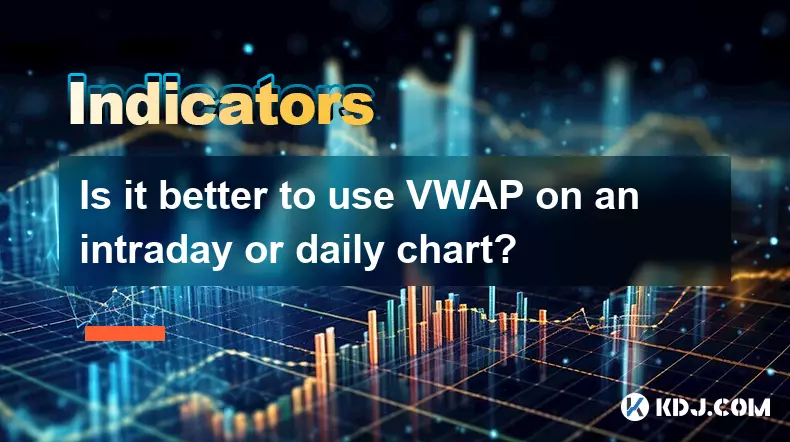
Is it better to use VWAP on an intraday or daily chart?
Oct 15,2025 at 02:01am
Intraday Trading and the Role of VWAP1. Intraday traders frequently rely on VWAP (Volume Weighted Average Price) as a dynamic benchmark for assessing ...

How do you use VWAP to scale in and out of positions?
Oct 14,2025 at 02:19am
Understanding VWAP as a Dynamic Benchmark1. The Volume Weighted Average Price (VWAP) is not just an indicator—it functions as a dynamic benchmark that...

What are the main advantages of using VWAP over EMA?
Oct 11,2025 at 02:18am
Main Advantages of Using VWAP Over EMA1. Volume-Weighted Average Price (VWAP) incorporates trading volume into its calculation, offering a more accura...

How do you use VWAP on different chart types like Heikin Ashi?
Oct 11,2025 at 05:01pm
Understanding VWAP in the Context of Heikin Ashi Charts1. The Volume Weighted Average Price (VWAP) is a powerful analytical tool commonly used by trad...

What's the main difference between VWAP and TWAP?
Oct 12,2025 at 11:54am
Understanding VWAP and Its Role in Crypto Trading1. Volume Weighted Average Price (VWAP) is a trading benchmark that calculates the average price of a...

How do you identify exhaustion moves using VWAP and its bands?
Oct 12,2025 at 08:00am
Understanding the Role of Decentralized Exchanges in Crypto Trading1. Decentralized exchanges (DEXs) operate without a central authority, allowing use...

Is it better to use VWAP on an intraday or daily chart?
Oct 15,2025 at 02:01am
Intraday Trading and the Role of VWAP1. Intraday traders frequently rely on VWAP (Volume Weighted Average Price) as a dynamic benchmark for assessing ...

How do you use VWAP to scale in and out of positions?
Oct 14,2025 at 02:19am
Understanding VWAP as a Dynamic Benchmark1. The Volume Weighted Average Price (VWAP) is not just an indicator—it functions as a dynamic benchmark that...

What are the main advantages of using VWAP over EMA?
Oct 11,2025 at 02:18am
Main Advantages of Using VWAP Over EMA1. Volume-Weighted Average Price (VWAP) incorporates trading volume into its calculation, offering a more accura...

How do you use VWAP on different chart types like Heikin Ashi?
Oct 11,2025 at 05:01pm
Understanding VWAP in the Context of Heikin Ashi Charts1. The Volume Weighted Average Price (VWAP) is a powerful analytical tool commonly used by trad...
See all articles



















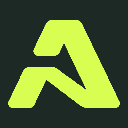
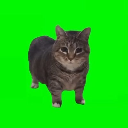
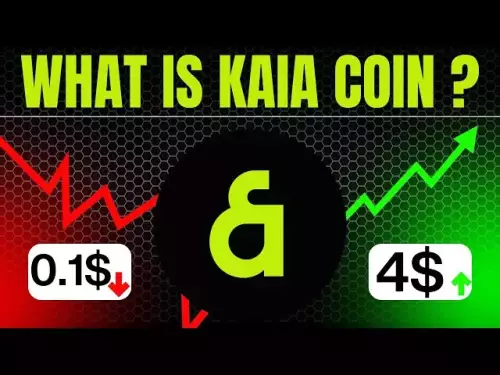

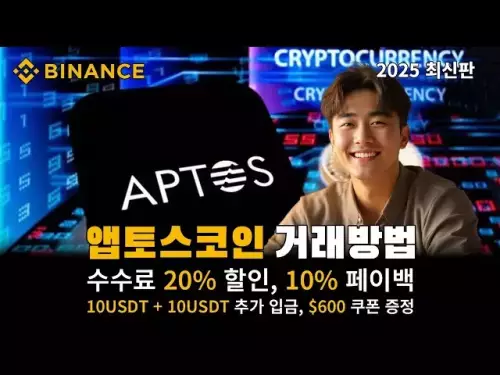


![Staking ATH: How To Stake $ATH in October 2025 with 523% APY — [Step-By-Step Guide] Staking ATH: How To Stake $ATH in October 2025 with 523% APY — [Step-By-Step Guide]](/uploads/2025/10/15/cryptocurrencies-news/videos/staking-ath-stake-ath-october-apy-stepstep-guide/68eef94d80903_image_500_375.webp)















































